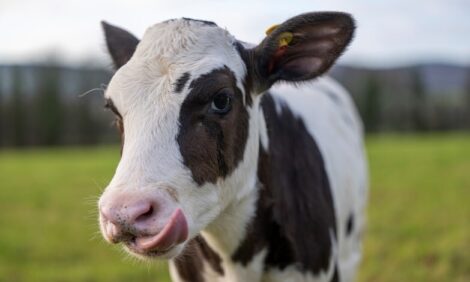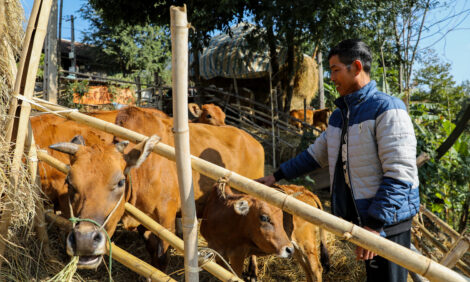



Australian Dairy Farming Overview- 2012:Dairy Manufacturing and Markets
In the absence of production growth, profitability and efficiency have been the message of large dairy processors who have invested in greater storage, said Dairy Australia in a synoptic analysis of the industry in 2012.As in the farm sector, the milk processing sector
is undergoing continuing rationalisation. This has
resulted in improved factory capacity, as larger
operations have improved their efficiency and
economies of scale. The lack of growth in milk
production over the past decade has relieved
the pressure on Australian dairy companies
to continue to invest in increasing processing
capacity—at least in the short to medium term.
Instead, the challenge has been to remove surplus
capacity and to utilise the existing capacity as
profitably as possible.
The Australian dairy manufacturing sector is
diverse and includes farmer-owned co-operatives,
public, private and multinational companies.
Famer-owned co-operatives no longer
dominate the industry and now account for
33% of Australia’s milk production. The largest
cooperative is Murray Goulburn accounting for
over 30% of national milk output.
Other Australian dairy companies cover a diverse
range of markets and products, from the publicly
listed Warrnambool Cheese & Butter and Bega
Cheese Limited (who now own both Tatura Milk
Industries and De Cicco); to the privately owned
Regal Cream (Bulla Dairy Foods), Burra Foods
and Longwarry Food Park to name just a few;
together with many highly specialised cheese
manufacturers.
Large multi-national dairy companies have
operated in the Australian dairy industry for
many years and currently include Fonterra (New
Zealand), Kirin (Japan) and Lactalis (France)—who
took over Italy’s Parmalat in mid-2011.
There were a number of changes in the ownership
of dairy companies in the Australian industry during
the 2011/12 season.
- Bega Cheese obtained shareholder approval and listed on the Australian stock exchange in August 2011 and acquired the remaining 30% of Tatura Milk Industries that they didn’t previously own.
- Hastings Co-operative sold its Hastings Valley Dairy factory (in Wauchope) to Indian company Sungrow.
- Tasmanian Dairy Products (TDP) purchased the Gunns Ltd sawmill plant in Smithton in the north-west Tasmanian dairying region to develop into a milk processing plant to produce a range of milk powders for export. TDP is owned by a consortium of investors including Murray Goulburn (55%), Mitsubishi Japan (25%) and the original local dairy farmer investors (20%).
- Chinese company Bright Food purchased a 75% stake in Australian distributor Manassen Foods, owned by the Champ private equity group since 2006. Manassen distributes a range of local and imported cheese brands.
- United Dairy Power [UDP] acquired Lion— Dairy’s Murray Bridge and Jervois cheese factories in South Australia.
- US yogurt company, Chobani, purchased Dandenong-based Bead Foods (Gippsland brand yogurt).
- Private equity group, Pacific Equity Partners, purchased the Peters ice cream business from Nestlé.
The major manufactured product streams are:
- drinking milk—fresh and UHT long-life;
- skim milk powder (SMP)/buttermilk powder (BMP)/butter;
- butter/casein;
- cheese;
- wholemilk powder (WMP);
- other consumer products, such as yogurts, custards and dairy desserts; and
- specialised ingredients, such as whey proteins, nutraceuticals, etc.
Cheese is consistently the major product stream;
utilising around one third of Australia’s milk
production in 2011/12 and has remained around
this level for a number of years.
Skim milk powder / butter and drinking milk
production were the two next largest users of
milk; each taking about a quarter of the total milk
produced in Australia.
Around 60% of manufactured product (in milk
equivalent terms) is exported and the remaining
40% is sold on the Australian market. This
contrasts with drinking milk, where some 97%
is consumed in the domestic market.
The Utilisation of Australian Milk in 2011/12

Dairy Markets
Over the past two decades Australian milk
production has been well above the volume
required for domestic consumption, so that
a significant proportion is destined for export
markets. The share of total production exported
has ranged from 40–60% over the period shown
in Figure 17. Over recent years Australia has
exported around 45% of its milk production—
the lowest proportion since the mid-1990s, due
to the reduced availability of product over these
years—and this estimate dropped below 40%
in 2011/12.
While Australia accounts for an estimated 2%
of the world’s milk production, it is a significant
exporter of dairy products. Australia currently
ranks fourth in terms of world dairy trade—
with an 7% share—behind New Zealand, the
European Union as a bloc and the United States.
Japan is the single most important export market
for Australia, accounting for 19% of exports by
value. Australian exports are concentrated in Asia,
which represented 74% of the total dairy export
value of A$2.76 billion in 2011/12.
Australian Composition and Exports (Milk Equivalents)

Australian Dairy Markets by Product, 2011/12 (A$ Million)

*Also includes infant powder
This concentration of exports in Asia/East Asia
reflects both Australia’s geographic proximity to
these markets and the extent to which Australia
has been excluded from other major markets by
direct restrictions (as in the case of the European
Union) or the impact of the export subsidy
programs of major competitor countries.
Asian markets have considerable potential for
consumption growth as incomes rise and diets
become more ‘westernised’. Australian dairy
companies have proven track records in supplying
these markets over a number of decades. The
Middle East and the Americas are also becoming
increasingly important markets for many
Australian exporters.
Exporters’ Share of World Trade in 2011 (Milk Equivalents)

Australian Exports by Region, 2011/12 (A$ Million)

Australia’s top five export markets by both volume and value in 2011/12 were Japan, Greater China, Singapore, Indonesia and Malaysia. The fastest growing export market for Australia in recent years has been Greater China; which is made up of mainland China, Hong Kong and Macau.
Top 10 Australian Export Destinations, 2011/12

* includes China, Hong Kong and Macau
Further ReadingYou can view the full report by clicking here. |
January 2013



